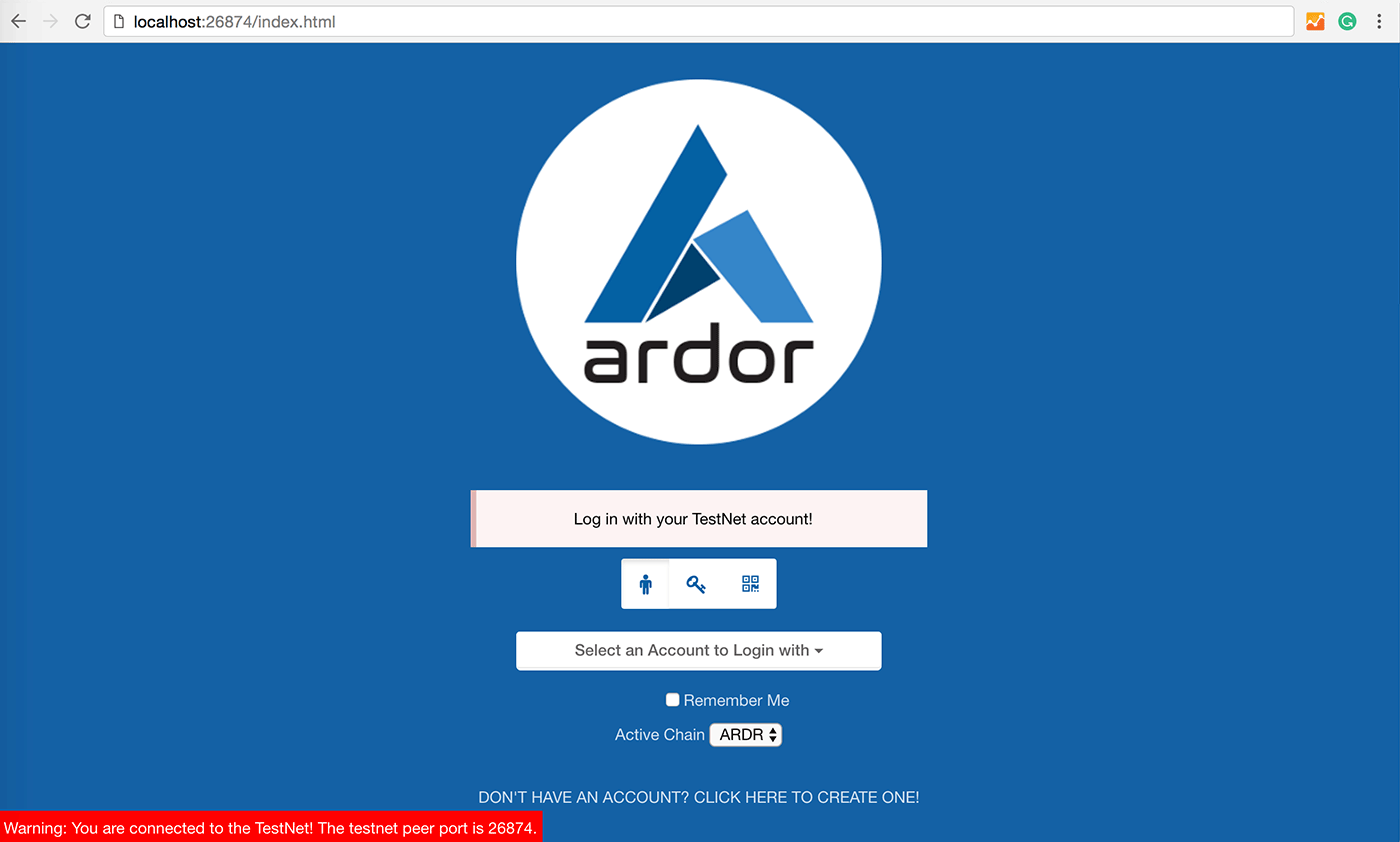This post is part of a series that compares Ardor to other blockchain projects with similar features or goals. You can find the previous posts here:
- Ardor vs. Plasma
- Ardor vs. the Competition, Pt. 1: Lisk
- Ardor vs. the Competition, Pt. 2: NEM/Mijin/Catapult
- Ardor vs. the Competition, Pt. 3: IOTA
- Ardor vs. the Competition, Pt. 4: Waves
This week I studied Stratis, a blockchain-as-a-service platform based on the Bitcoin protocol.
Stratis
The goal of the Stratis project is to enable businesses to create their own customizable blockchains, choosing from a set of prepackaged features. Additionally, the Stratis Group, which guides the development of Stratis, will offer consulting services to help businesses find ways to use blockchain technology effectively, and presumably will also help them configure and deploy custom blockchains on the Stratis platform.
Put this way, Stratis sounds an awful lot like Ardor. But in most of the details–to the extent that details about Stratis are available, anyway–the two platforms are quite different. More on those differences in a bit.
Currently, the Stratis platform comprises several parts:
- NBitcoin, a comprehensive Bitcoin implementation in C# inspired by Bitcoin Core;
- NStratis, a fork of NBitcoin that adds a proof-of-stake mining algorithm and an alternative proof-of-work algorithm;
- the Stratis Bitcoin Full Node, which can run on either the Bitcoin network or the Stratis network, and which serves as the basis for the rest of the platform;
- the Breeze Wallet, a simplified payment verification (SPV) wallet for both Bitcoin and Stratis that implements TumbleBit to make transactions private; and,
- the Stratis Identity module, which allows third parties to attest to the identity of the person controlling a Stratis account.
Note that most of these components are currently in alpha.
Particularly noteworthy in this list is the integration of TumbleBit into the Breeze Wallet. The TumbleBit paper is rather dense; if you’re interested in the details, I recommend instead this excellent presentation by two of the authors. In a nutshell, TumbleBit uses one-way payment channels to transfer funds from a set of payers to an intermediary called the Tumbler, and from the Tumbler to a set of payees, without any of the parties having to trust one another. The key innovation over other payment channel implementations is that TumbleBit uses blind RSA signatures in a clever way to prevent the Tumbler from knowing which incoming transaction maps to a given outgoing transaction. If many accounts are transacting through the Tumbler, then it is impossible to trace the funds in an output account back to the input account that sent them. Not even the Tumbler can link the two accounts.
Stratis’s Breeze Wallet provides TumbleBit functionality for both Bitcoin and Stratis, making it useful to a much larger audience than would be the case if it worked only on the Stratis network. Moreover, since the TumbleBit protocol uses off-blockchain payment channels, it is possible to make many payments through the Tumbler in approximately the same amount of time as it takes to make a single payment.
The Stratis Identity module is still at the proof-of-concept stage, but it is functional nevertheless. Users can log into their Microsoft, Google, or LinkedIn accounts using the Stratis Identity mobile app, and these services will notify Stratis of the successful login. A special account owned by Stratis then records an attestation to the successful login by hashing the corresponding personally identifiable information (e.g., name and email address) and storing it on the Stratis blockchain.
An attestation by Google that a person owns a particular Gmail account is perhaps not the most useful identity service, but it is easy to see how the same mechanism could be used to prove ownership of some piece of information that is much more difficult to verify. For example, a government agent might attest that somebody presented a valid photo ID, together with a name and address. If a user can provide the name and address that match the hash on the blockchain, that would probably convince a service provider that the user also owned the corroborating photo ID, since the government agent attested to all three pieces of information together.
TumbleBit integration in the Breeze Wallet and the Stratis Identity module are two examples of the kinds of features that Stratis intends to offer on their platform. I’m not completely sure I’ve grasped the overall architecture of Stratis, but from what I can understand, the idea is for the Stratis blockchain to delegate the backend processing for each new feature, such as TumbleBit and Stratis Identity, to a dedicated set of masternodes. For example, the upcoming Breeze Node–not to be confused with the Breeze Wallet, which uses SPV instead of requiring a full node–will be a masternode that serves as a Tumbler. Similarly, there are plans to build masternodes that process Stratis Identity transactions, though I don’t really know what that means and can’t find any details.
Finally, it is worth mentioning that the Stratis team has planned several other features, most notably a way to deploy sidechains anchored to the Stratis chain. My understanding is that this will be the main mechanism that Stratis uses to provide customizable, private blockchains to clients.
Unfortunately, I haven’t been able to find any details about how sidechains on Stratis will work. The Stratis white paper refers to Blockstream’s sidechain paper, but that is the only hint I have found so far about Stratis’s design. In particular, it is not so easy to securely and trustlessly transfer value between two blockchains without having at least some of the miners on each chain validate all transactions on both chains. The details, including how the sidechain protocol handles forks and reorginzations, are crucial in order to evaluate how secure the mechanism is.
Even supposing that transfers between the Stratis chain and sidechains are secure, there is also the matter of the security of the sidechains themselves. The Stratis white paper says in several places that the Stratis chain will somehow provide security for its sidechains, but it doesn’t explain how that will work. Typically, sidechains are completely independent and must secure themselves.
Compared to Ardor

With Ardor, on the other hand, the parent chain does provide security for each child chain.
In fact, this is one of the most important differences between Ardor’s parent-chain/child-chain architecture and typical sidechain implementations. Unfortunately, without more technical details from the Stratis team, it is impossible to do a proper comparison between their design and Ardor’s approach.
One comparison that we can do is between Stratis’s TumbleBit feature and Ardor’s Coin Shuffling feature. (Note that Coin Shuffling will not be available on the Ardor chain itself, but it will be available on Ignis, the first child chain, and other child chains can also choose to support it.) This feature is Nxt’s implementation of the CoinShuffle algorithm, which allows a group of users to trustlessly agree to transfer a fixed quantity of coins from their (input) accounts to a set of output accounts, one per input, without any user being able to know which of the other users controls each of the other output accounts. The algorithm is not very complicated, and section 4.2 of the CoinShuffle paper gives a good overview of how it works.
I don’t claim to be an expert on either algorithm, but the TumbleBit approach seems to me to have a couple of advantages over CoinShuffle. Because it uses off-blockchain payment channels, it is potentially capable of scaling to a high transaction rate in addition to adding a measure of privacy to payments, addressing two problems at once. Also, if the goal is to prevent an observer from noticing correlations between several payments–which might leak information about a business’s customers or supply chain, for example–it would probably be more convenient to make the payments back-to-back from the same account via TumbleBit instead of having to first shuffle each payment to a new account.
On the subject of identity verification, I think the Stratis Identity module is an interesting proof of concept, but in my opinion Ardor provides a much richer set of tools for identity-related services. While a service like Stratis Identity can be built relatively easily on any blockchain, Ardor offers a couple of unique features that could extend such a service for some interesting applications.
On Ardor, identity validators will be able to attest to the identities of account owners using Account Properties. These are arbitrary bits of data that can be permanently associated with an account on the blockchain, rather like attestations in Stratis Identity. One novel feature that Ardor will add, though, is the ability to issue assets that can only be traded by accounts that have a specific property set.
In cases where government regulations require that asset issuers know who is purchasing their assets, this feature will allow issuers to restrict trading of their assets to accounts whose owners’ identities have been verified by compliant identity providers. This level of control will hopefully help put blockchain-based securities on a firmer legal foundation, and will make it easier for asset issuers to comply with the law.
Even apart from regulatory compliance, asset issuers will probably find other uses for this feature. For example, a club or other private organization could express eligibility requirements for membership as a set of required account properties, issue an asset that only eligible accounts could obtain, and then use the asset to pay dividends to or conduct polls of members.
Some Thoughts on Marketing

Even having read this far, you might still be wondering what exactly the Stratis platform is and how it works. To be frank, I have found myself asking these questions too, even after many hours of reading about Stratis. At the risk of speaking perhaps a bit too close to the edge of my knowledge, I think it might be helpful to compare and contrast the marketing efforts of Jelurida and the Stratis Group in order to shed some light on why it is hard for me to answer these very basic questions.
Reading the Stratis website and the white paper (linked above), I got the distinct impression that, to be blunt, those resources weren’t really written for me. The language they use reminds me of how the salespeople at my company talk, and I learned a while ago that engineers and salespeople tend not to understand each other very well.
I read that Stratis offers “simple and affordable end-to-end solutions” to “streamline and accelerate [my] blockchain project development”; that it is a “powerful and flexible blockchain development platform designed for the needs of real-world financial services businesses and other organizations that want to develop, test and deploy applications on the blockchain”; and that its “one-click process means that new chains can be launched with unprecedented speed, tailored for the needs of the organization”; but I still don’t really understand what any of this means, much less how Stratis will accomplish these things.
This type of language conveys precisely zero information to me. Without technical details, I am completely, hopelessly lost. I know that there are plenty of people who are fluent in business-speak, though, and those people can probably read the Stratis white paper and come away with a decent, if very high-level, understanding of what the company plans to do. In contrast, it took me multiple passes through the white paper before I began to grasp the big picture, and I’m still not sure I have it right.
The Ardor white paper, on the other hand, contains substantial technical detail about how Ardor works and what distinguishes it from other blockchain platforms. It is obvious, both from its content and how that content is organized, that engineers played a significant role in writing it. Upon completing my first pass through it, I understood pretty well what problems Ardor solves and how it solves them.
The point I’m trying to make with this comparison is that business-minded people and technically-minded people often speak different languages, and the marketing materials that the Stratis Group and Jelurida have created seem to reflect this difference. Personally, I found it extremely frustrating to find so little technical substance in Stratis’s resources, and this frustration has probably prevented me from really understanding Stratis.
Conclusion
Is my assessment of Stratis too harsh? Maybe. I do think that TumbleBit is an interesting piece of technology, and it seems smart for the Breeze Wallet to implement it for both Stratis and Bitcoin. Moreover, if we drop the white paper’s contention that the Stratis chain will secure its sidechains, and instead assume that sidechains will be responsible for their own security, then I can use my imagination to fill in enough of the gaps to come up with at least a rough mental image of what Stratis will look like when it is complete.
This mental image, though, is basically a direct competitor to Lisk. Sure, Stratis is based on .NET and the Bitcoin protocol instead of JavaScript and Lisk’s predefined transaction types, and the feature sets that the two teams intend to offer don’t overlap perfectly, but essentially both projects aim to provide a central, public blockchain and a set of tools for easily creating sidechains on it. Both projects are in rather early stages of development, too, and for this reason it can be difficult to find technical details about them.
Ardor is quite different. Built on the Nxt codebase, it is already far more mature than Stratis, despite not having launched on its mainnet yet. Its parent-chain/child-chain architecture achieves the goal described in the Stratis white paper–a means for businesses to create customizable blockchains without having to worry about securing them–better than existing sidechain architectures. And the rich variety of features that Ardor already supports will take quite some time for Stratis to emulate.
Perhaps just as importantly, Jelurida and the Nxt community have done a great job of making technical information about Ardor and Nxt publicly available. This information lends credibility to the Ardor project and strengthens the community. In my opinion, it is what separates true marketing from hype.

